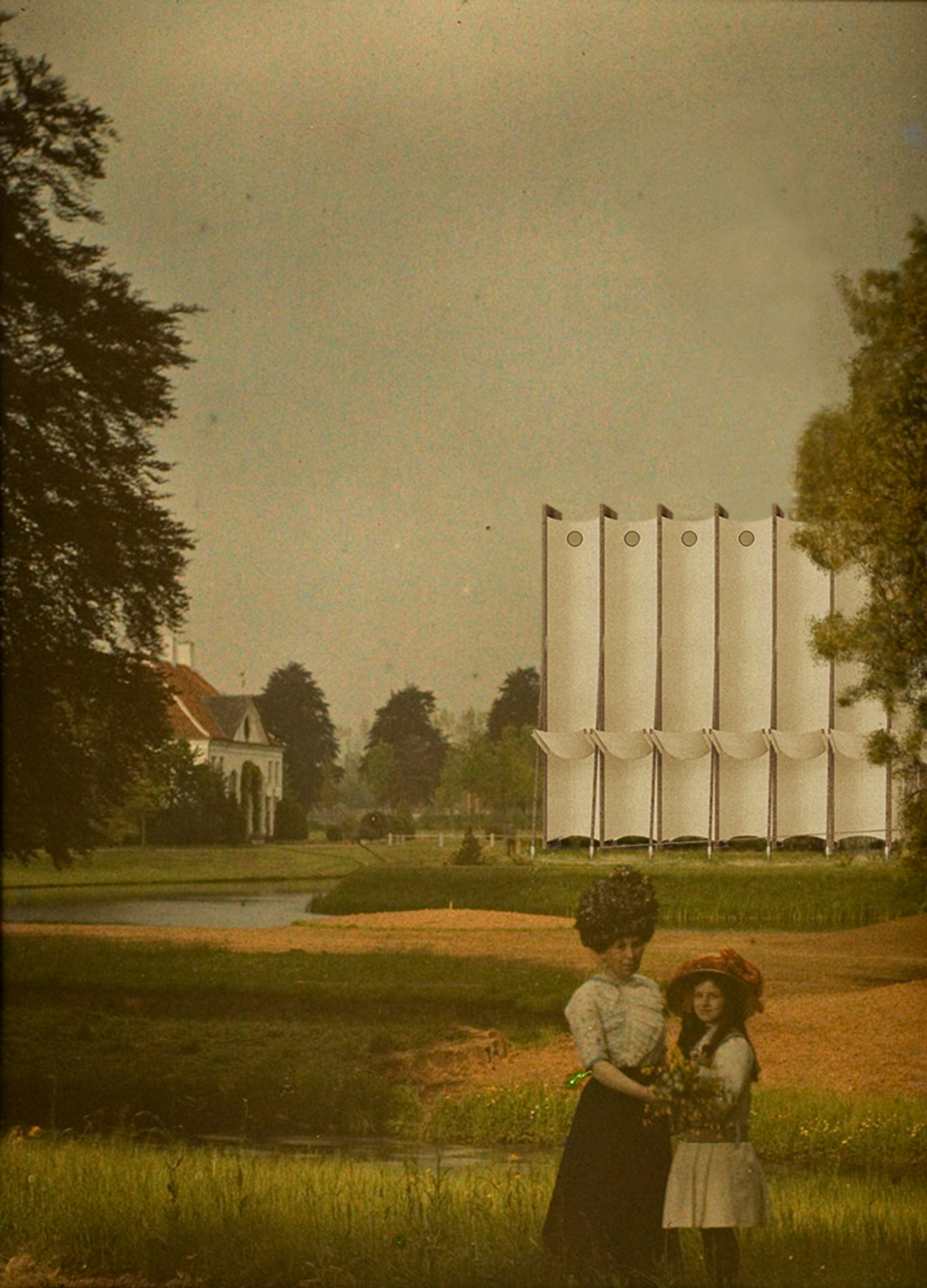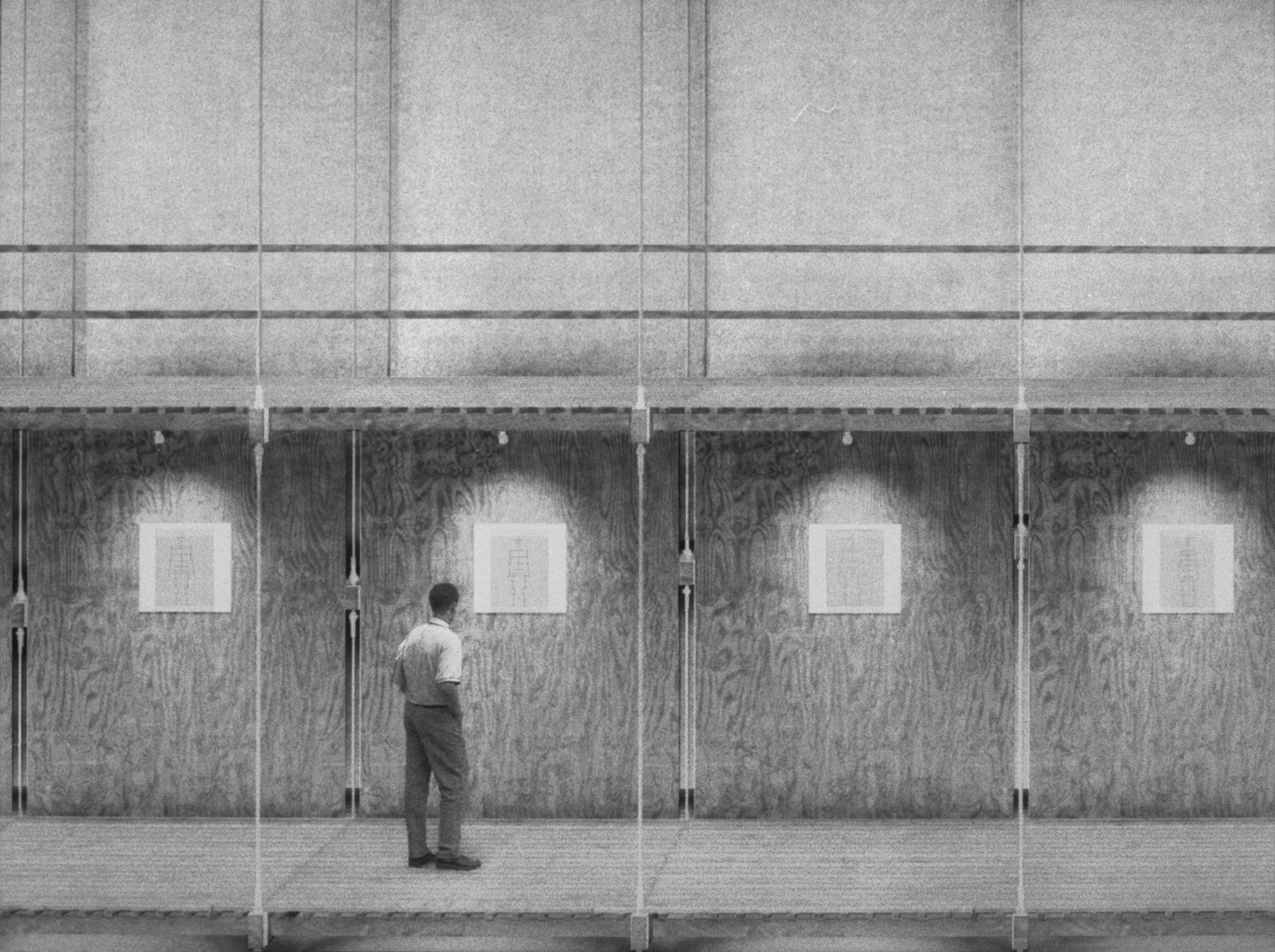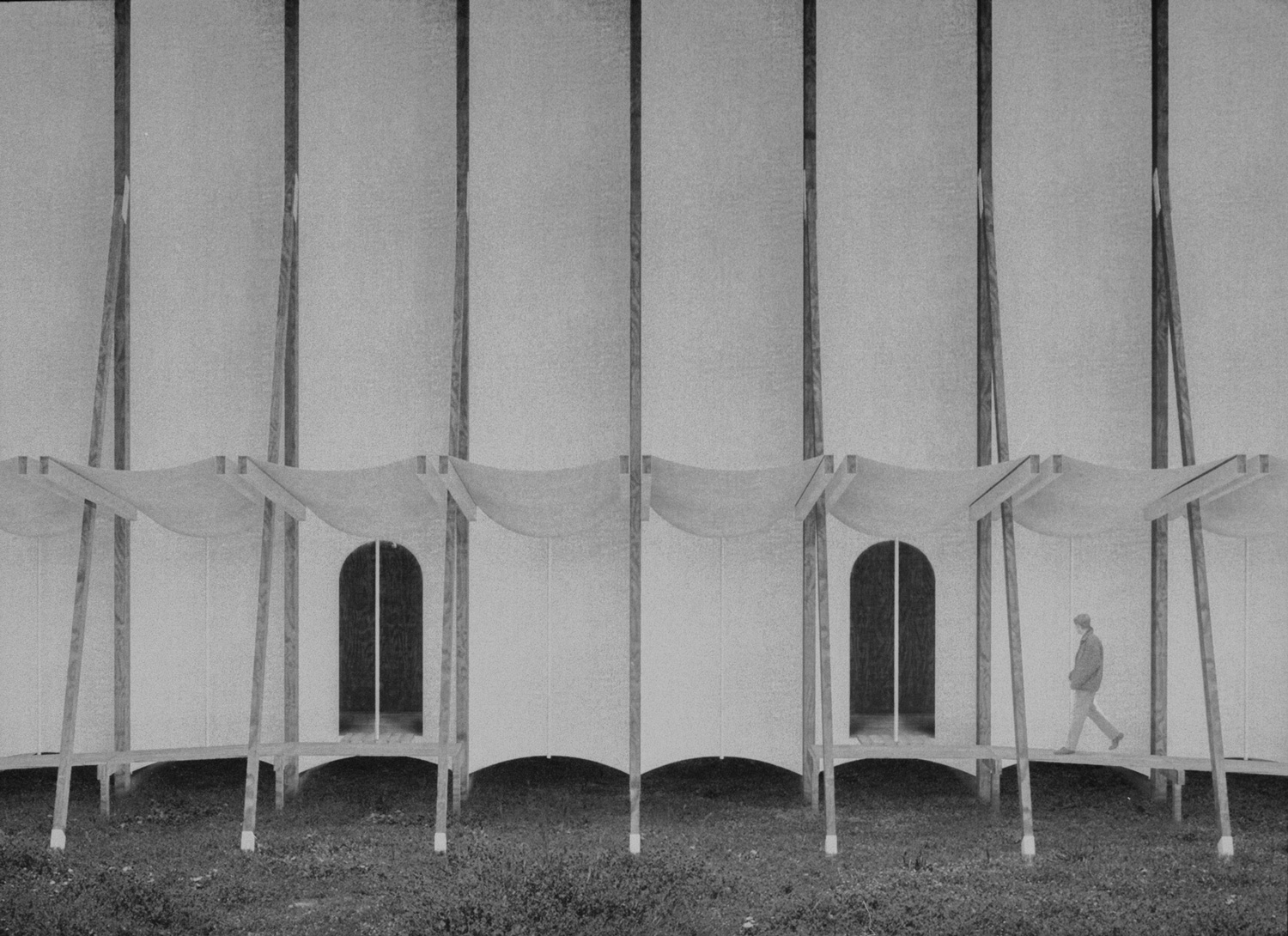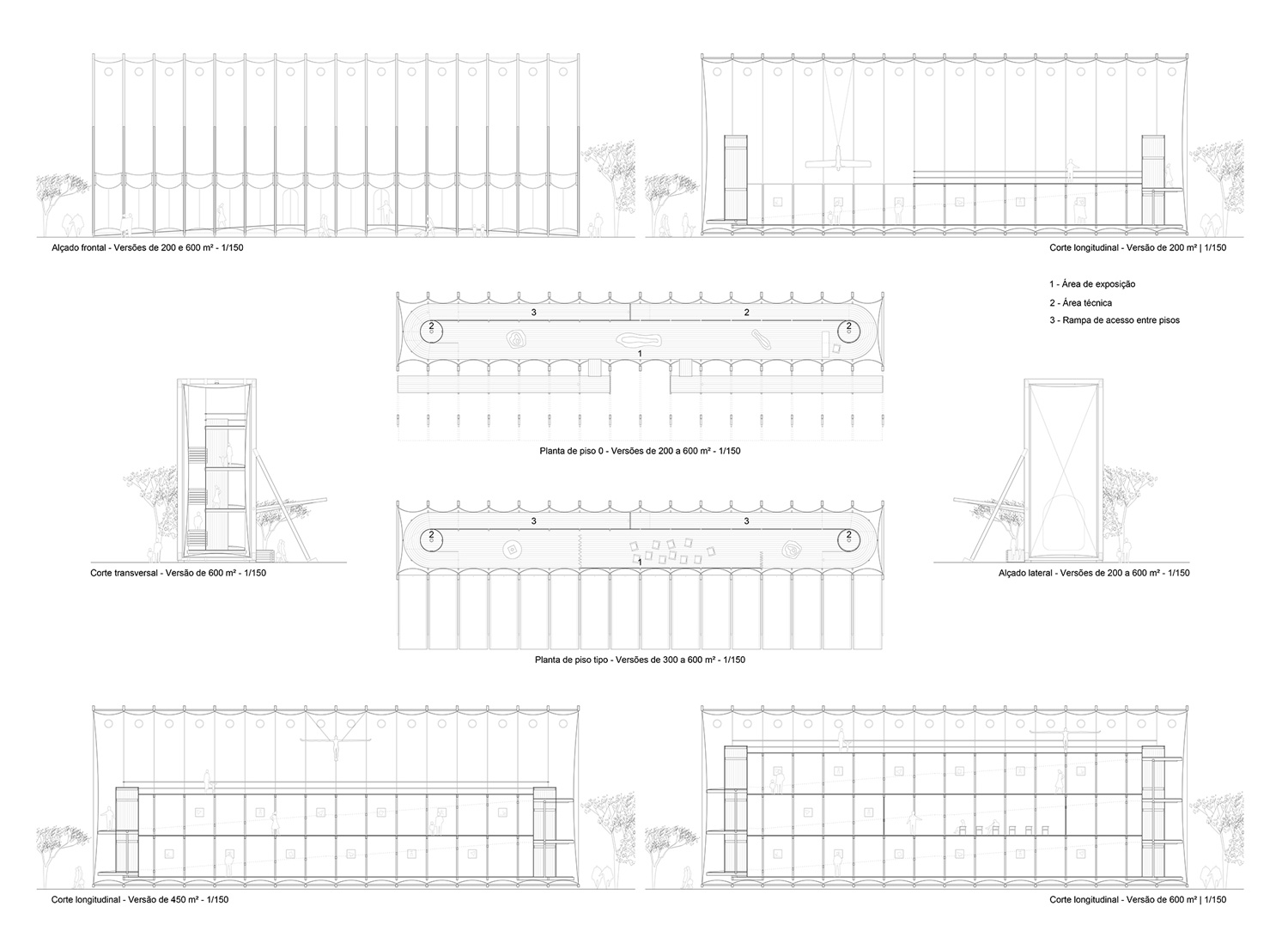☉ Serralves Itinerant Pavilion is a selected competition entry by Pedro Miguel Santos for Fundação de Serralves in 2017. Unrevealed location. Its scale is small with a surface of 600 sqm. Key material is wood.
The history of the tent as shelter is as old as civilization itself. Consequently this element has created strong and diverse symbols in our collective memory. This proposal is an exploration of these symbols, and a pragmatic reaction to a complex brief in the way it uses an ancestral typology as a solution to it.
Our itinerant building solves the entire definition of inner and outer boundary through a tensioned fiberglass membrane. This translucent element takes shape from a laminated and darkened wood exoskeleton, to which it is connected through stainless steel fittings and cables. This enclosure is unchanged for all variations of the structure, from 200 m² to 600 m². Consequently the building’s footprint is fixed and has 150 square meters. The projection of the area is vertical, through floors that can be up to four (600 m²), overlapping along a 13.3 meter high roof. With its external immutability the pavilion allows, in its greatest variations, to be implanted in places where it would be impossible to extend its gross area horizontally.
This structure of great verticality, is assisted against the horizontal actions by a set of pillars inclined against the frontal facade. With these elements a loggia is formed along the whole elevation, which, besides sheltering against the elements and their structural function, serves as a connection between the building and the human scale. Under the loggia two accessible, symmetrical, accessible ramps connect the height of the exterior pavement to the height of the interior. These can be adapted to the varied topographies that the pavilion can face.
With the exoskeleton the proposal seeks to liberate the interior space of heavy structural elements, being the transversal beams that support the floor modules the only ones present. The beams are supported by steel cables that ascend to the transverse elements of the exoskeleton at the top of the structure, thus not requiring the presence of pillars to support them. This inner structural lightness, strengthens the visual impact of the translucent properties of the fiberglass membrane. This way is also achieved an essential light uniformity for the display of art.
A ramp accessible in the longitudinal direction of the structure, and adjacent to the rear facade, interconnects all floors. Its extension and light quality (since it is illuminated homogeneously by the membrane), make this an element reminiscent of the vast history of the ramp as an exhibition constituent in the museological program, thus serving as a useful exhibition area.






